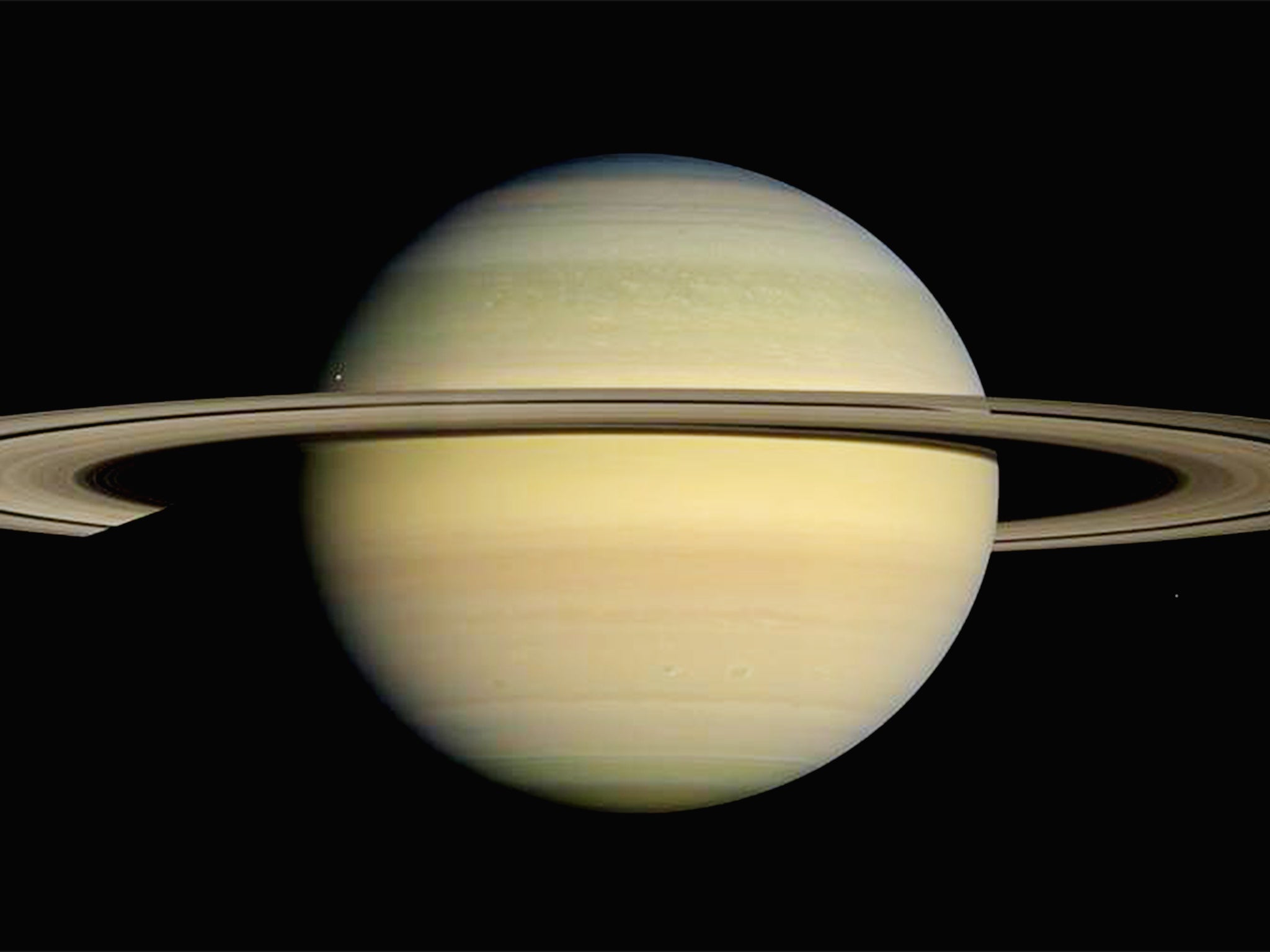Nasa's Cassini spacecraft reveals unknown details about Saturn's rings – and just how strange they are
Scientists also reveal 'weird' findings about the planet's magnetic field

Your support helps us to tell the story
From reproductive rights to climate change to Big Tech, The Independent is on the ground when the story is developing. Whether it's investigating the financials of Elon Musk's pro-Trump PAC or producing our latest documentary, 'The A Word', which shines a light on the American women fighting for reproductive rights, we know how important it is to parse out the facts from the messaging.
At such a critical moment in US history, we need reporters on the ground. Your donation allows us to keep sending journalists to speak to both sides of the story.
The Independent is trusted by Americans across the entire political spectrum. And unlike many other quality news outlets, we choose not to lock Americans out of our reporting and analysis with paywalls. We believe quality journalism should be available to everyone, paid for by those who can afford it.
Your support makes all the difference.Nasa's Cassini spacecraft has revealed new details about Saturn – and found it much more strange than we'd ever expected.
The famous rings that sweep around the planet are far more chemically rich than scientists had previously imagined. They discovered expected things, such as water, but also found organic material present in there too.
And new findings about the planet's magnetic field show that it is more structured than expected. But it gave no clues about how it was actually formed, continuing to puzzle scientists study it.
The findings are the latest discovery from the last batch of data sent by Nasa's Cassini spacecraft. That smashed into Saturn and destroyed itself last year, but before it did so it conducted a series of daring dives that allowed it to capture new detail about the gas giant.
The findings about the construction of the rings could change our understanding of how our own solar system works, according to researchers who worked on the new discoveries.
"This is a new element of how our solar system works," said Thomas Cravens, professor of physics and astronomy at the University of Kansas and a co-author of the new paper.
"Two things surprised me. One is the chemical complexity of what was coming off the rings – we thought it would be almost entirely water based on what we saw in the past. The second thing is the sheer quantity of it – a lot more than we originally expected. The quality and quantity of the materials the rings are putting into the atmosphere surprised me."
In time, the findings could help us understand how the mysterious rings that surround Pluto and other planets might have formed.
"This could help us understand, how does a planet get rings? Some do, some don't," said Professor Cravens. "What's the lifetime of a ring? And what's replenishing the rings? Was there a time when Saturn didn't have rings? How did that composition get into there in the first place? Is it left over from the formation of our solar system? Does it date back to proto pre-solar nebula, the nebula that collapsed out of interstellar media that formed the sun and planets?"
And the structure of the magnetic field suggests we might have to alter our understanding of the way they can form. Previously, scientists thought that planets could only form a magnetic field if their magnetic and geographic poles were slightly tilted away from each other, like they are on Earth, but the new data shows that isn't the case on Pluto.
"It may still be that Saturn's turbulent atmosphere of thick gases is obscuring some of the magnetic data, but it looks increasingly likely we will have to rethink the ways different kinds of planets can form magnetic fields," said principal investigator for the magnetometer Professor Michele Dougherty, from the Department of Physics at Imperial.
Join our commenting forum
Join thought-provoking conversations, follow other Independent readers and see their replies
Comments